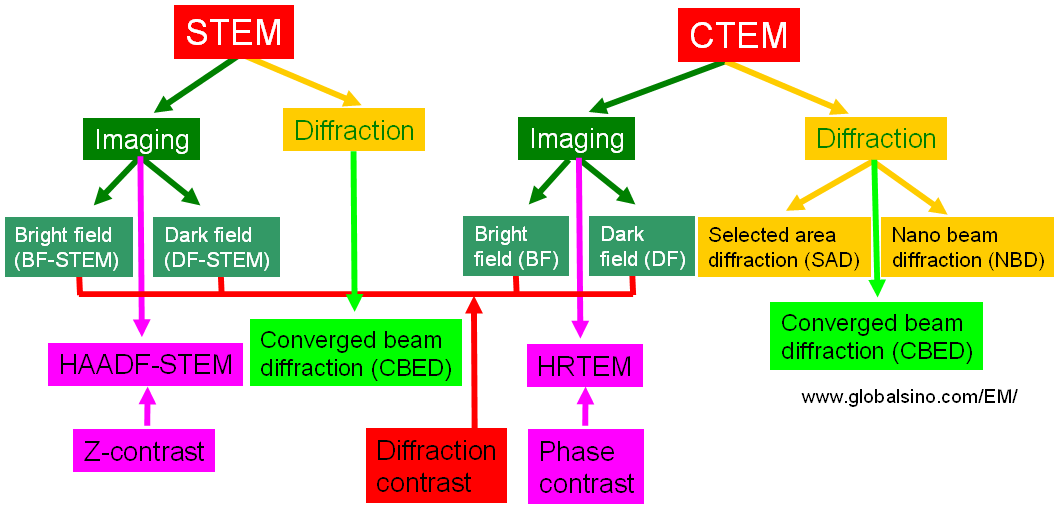=================================================================================
Historically, CBED is the oldest TEM diffraction technique.
A convergent beam of electrons can limit the illuminating region of the specimen which contributes to the diffraction pattern. This region is a function of the beam size and beam-specimen interaction volume, which increases with specimen thickness but can be much smaller than in SAD (selected area diffraction).
In SAD, the electron beam incident on the specimen is parallel (fixed incident vector k) and relatively large (usually ~1-10 µm in diameter). In CBED, the beam is convergent (a range of k-vectors) and relatively small (usually ~10 - 100 nm in diameter). In other words, the SAD method is ideal for areas and grains lager than ~100 nm. To be able to reduce further the area being analyzed, it is better to use CBED techniques.
Like SAD, CBED is most useful when the beam is oriented along a zone axis in the crystal, giving a symmetrical zone-axis diffraction (ZAP) pattern. On the other hand, unlike SAD patterns, CBED ZAPs contain three-dimensional (3D) information, due to the enhanced HOLZ signatures.
Kikuchi lines are more pronounced in CBED patterns than in SAD patterns because: i) CBED patterns arise from a smaller, and thus more uniform region than SAD patterns; and ii) The enhancement of coherent and elastic scattering in CBED.
Figure 4141 illustrates the comparison of the main contrasts in both CTEM and STEM modes. On the other hand, Table 4141 summarizes the typical comparison between CBSE and SAD.

Figure 4141. Comparison of the main contrasts in both CTEM and STEM modes.
Table 4141. Typical comparison between CBED and SAD.
| |
CBED |
SAD |
| |
=============================== |
=============================== |
Electron source |
Convergent beam |
Parallel beam |
Schematic illustration |
|
|
Diffraction pattern |
Are discs even with the smallest aperture |
Always spots; the spot sizes are not aperture-dependent |
Example of diffraction patterns |
|
|
Indexing CBED ZOLZ patterns is similar to indexing SAD (selected area diffraction) patterns. With the indexed CBED patterns one can do exactly the same type of orientation determination as with the indexed SAD patterns. However, CBED can work on a much smaller dimensional scale, e.g. suitable for crystallographic analysis of nanostructures.
|